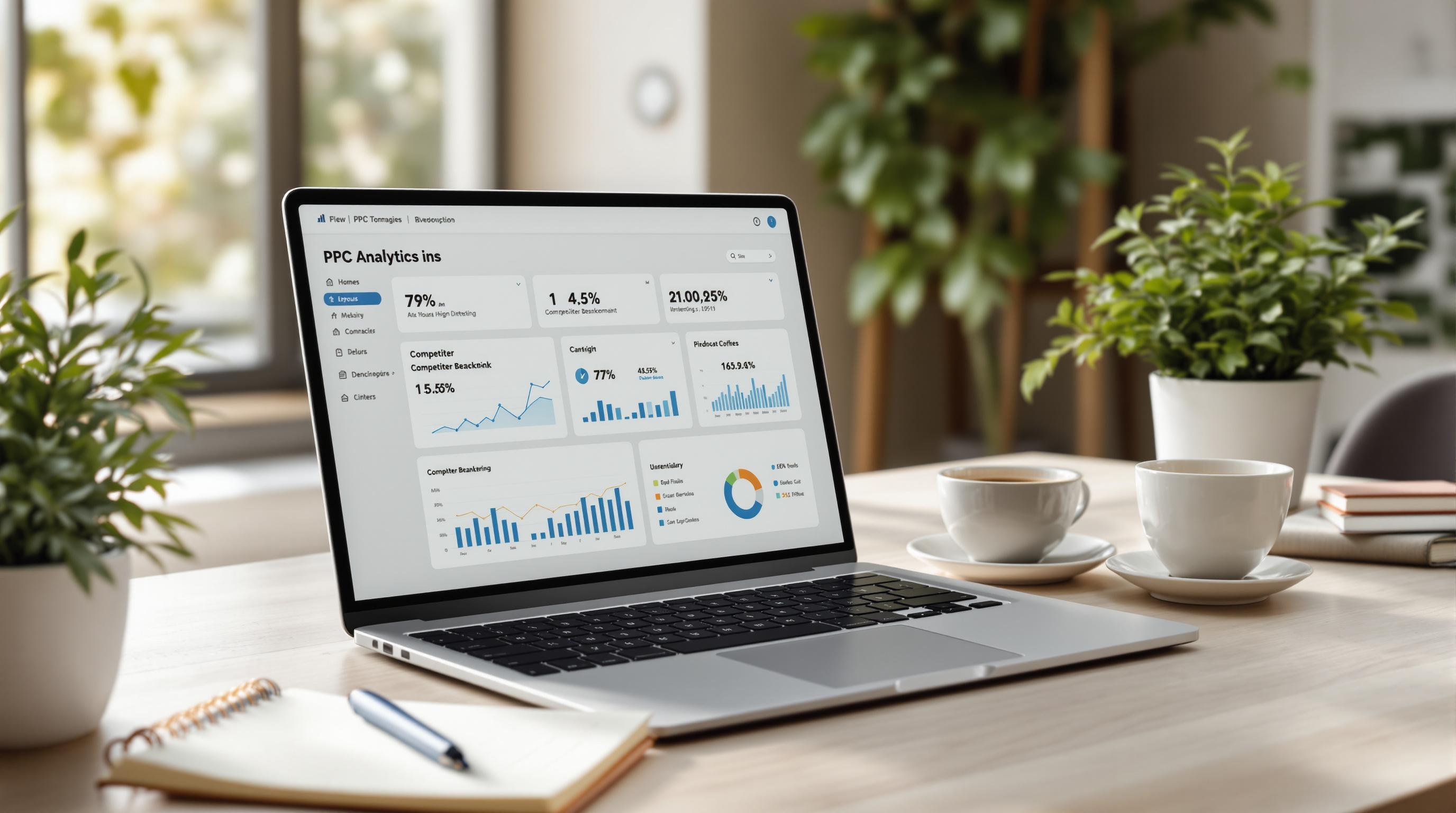Real-time bidding (RTB) can transform your advertising strategy by making split-second decisions to maximize ROI. But it’s not without challenges. Here are the top issues advertisers face and how to tackle them:
- Data Speed and Processing Delays: Even a millisecond delay can waste money or miss opportunities.
- Algorithm Performance Limits: Complex algorithms can struggle with speed, learning phases, and real-world conditions.
- Budget Control: Erratic spending, seasonal surges, and real-time monitoring make managing budgets tricky.
- Market Price Changes: Fluctuating demand and competition drive unpredictable bid costs.
- Data Privacy Rules: Regulations like GDPR and CCPA restrict data usage, complicating optimization.
To succeed, focus on faster systems, smarter algorithms, real-time budget tools, predictive analytics, and privacy-compliant strategies. Ready to dive deeper? Let’s explore each challenge and its solutions.
Related video from YouTube
1. Data Speed and Processing Delays
In real-time bid optimization (RTB), every millisecond counts. A slight delay can mean missing out on valuable opportunities or wasting money on inefficient bids.
The main challenge? Balancing speed and accuracy. RTB platforms work under tight deadlines and need to:
- Quickly receive bid requests
- Process user data
- Calculate the best possible bid
- Submit the response in time
Delays can result in outdated data being used, leading to overbidding on less valuable impressions and draining budgets. The issue becomes even trickier when multiple data sources and integrations are involved, as they can add to the latency.
To stay competitive, advertisers need systems that handle data processing almost instantly and with precision. This often means investing in advanced infrastructure and tools, like those offered by specialized bid management platforms featured in the Top PPC Marketing Directory.
Striking the right balance between speed and accuracy is critical. It ensures smarter bids, better ROI, and controlled spending - laying the groundwork for tackling the performance limits of RTB algorithms.
2. Algorithm Performance Limits
Real-time bidding (RTB) algorithms, no matter how advanced, come with technical challenges that can affect how well they optimize campaigns and impact overall ROI.
The Trade-Off Between Complexity and Speed
RTB algorithms juggle a lot of factors - historical data, user behavior, market trends, competitor activity, and campaign objectives. This balancing act increases computational demands, which can slow decision-making, especially when there isn’t enough data to work with.
The Hurdles of the Learning Phase
Machine learning models need time to gather enough data and fine-tune themselves. During this initial phase, performance can be inconsistent, which may impact early campaign results.
Performance in Practice vs. Theory
While algorithms might perform well in controlled environments, real-world conditions like slow response times, processing delays, and lagging market adjustments can lower prediction accuracy and bidding efficiency.
Dependence on Signal Quality
The quality of input signals is critical. If signals are incomplete or delayed, the algorithm’s decisions can be less accurate, leading to subpar results.
To address these issues, some platforms are turning to solutions like edge computing to cut down on latency. Others are using hybrid systems that mix rule-based logic with machine learning to keep performance stable, even when the data isn’t perfect.
Recognizing these limitations helps set realistic goals for improving bid strategies. Up next, we’ll explore how these challenges influence budget management and spending efficiency.
3. Budget Control and Spending Rate
Handling budgets in real-time bidding (RTB) can be tough, thanks to constant changes and competitive pressures.
Erratic Spending Patterns
RTB often results in inconsistent spending. One moment, you're overspending; the next, you're underspending. This unpredictability makes planning a challenge.
Seasonal Cost Surges
Events like Black Friday bring sharp cost increases, making it harder to keep spending under control during these peak times.
The Challenge of Real-Time Monitoring
To avoid wasting money or misallocating funds, marketers need to keep a close eye on campaigns and make quick adjustments. This requires constant attention.
Balancing Budgets Across Campaigns
Dividing budgets effectively across multiple campaigns adds another layer of complexity. It demands regular performance reviews and reallocations to align with business goals and campaign outcomes.
For those aiming to streamline their budget management, the Top PPC Marketing Directory offers a range of tools designed to help with bid management and budget planning.
The key to managing RTB budgets successfully is a combination of strong monitoring systems and the agility to seize valuable opportunities as they arise. Up next, we’ll dive into how fluctuating market prices add another layer of complexity to RTB.
sbb-itb-89b8f36
4. Market Price Changes
Fluctuating market prices can make RTB (Real-Time Bidding) unpredictable, as bid costs shift based on competition, demand, and external influences.
In RTB, prices can spike quickly. For instance, during high-demand periods, bid costs may rise sharply. Similarly, when competitors tweak their strategies, it can lead to increased demand and higher prices. These dynamics highlight the importance of having strategies in place to handle such challenges effectively.
Automated Response Systems
Automated bidding tools are essential for managing price changes. These systems can monitor fluctuations, adjust bids in real-time, and help you avoid overspending.
The Role of Predictive Analytics
Predictive analytics can help you stay ahead of market changes. These tools allow you to:
- Examine past pricing patterns
- Spot seasonal trends
- Anticipate market fluctuations
- Develop smarter bidding strategies
Using Market Intelligence
Detailed market insights - like data on time of day, device usage, location, and audience behavior - are crucial for fine-tuning your bids.
To handle shifting market prices, a mix of automation, data-driven analytics, and adaptability is key. This combination ensures you can respond effectively to sudden changes in the bidding environment.
5. Data Privacy Rules and Access
As market dynamics evolve, data privacy has emerged as a key challenge in real-time bid optimization. Laws like GDPR, CCPA, and other regional privacy regulations have reshaped how advertisers gather and use data, creating new hurdles for the industry.
Impact on Data Collection
Privacy regulations have tightened restrictions on data collection, directly affecting bid optimization efforts. Key challenges include:
- Limited access to third-party cookies
- Reduced ability to track users across devices
- Stricter requirements for obtaining user consent
- Difficulty in building detailed user profiles
These restrictions are pushing advertisers to rethink their strategies and find compliant ways to optimize bids.
Alternative Optimization Approaches
Advertisers are turning to privacy-friendly methods to navigate these challenges:
- Contextual Targeting: Rather than relying on personal data, this approach uses information like webpage content, time of day, and other non-personal signals to guide bidding strategies.
-
First-Party Data: Companies are focusing on their own data sources, such as:
- CRM systems
- Website behavior tracking (with user consent)
- Direct customer interactions
- Purchase history
-
Privacy-Preserving Technologies: New tools are helping balance optimization goals with privacy requirements. Examples include:
Technology Purpose Privacy Benefit Federated Learning Trains algorithms Keeps data on devices Data Clean Rooms Enables secure analysis Maintains user anonymity Edge Computing Processes data locally Minimizes transfer risks
These strategies allow advertisers to respect privacy laws while still achieving effective bid optimization.
Compliance Considerations
To ensure compliance, advertisers should integrate strong privacy measures into their systems:
- Regularly audit data collection processes
- Update consent mechanisms to align with regulations
- Keep detailed records of data processing activities
- Practice data minimization to limit unnecessary collection
PPC Tools and Resources
Tackling real-time bid optimization challenges requires dependable tools. The Top PPC Marketing Directory (ppcmarketinghub.com) offers in-depth profiles and reviews to help you find the right tools for issues like data processing delays and privacy compliance.
Key Tool Categories
When evaluating tools for bid optimization, focus on these categories:
| Tool Category | Primary Function | Challenge Addressed |
|---|---|---|
| Real-Time Analytics | Processes campaign data quickly | Data Speed and Processing |
| Machine Learning Platforms | Uses advanced bidding algorithms | Algorithm Performance |
| Budget Management Systems | Manages campaign spending | Budget Control |
| Market Intelligence Tools | Monitors competitor pricing trends | Market Price Changes |
| Privacy-Compliant Platforms | Ensures adherence to data protection laws | Privacy Rules |
Each of these categories addresses specific challenges in real-time bidding.
Finding the Right Tools
The PPC Marketing Directory offers resources in key areas to streamline your campaigns:
Campaign Management Tools
- Platforms for managing bids
- Tools for keyword research
- Systems to track performance
- Solutions for A/B testing
Optimization Services
- Tools for improving landing pages
- Resources for better ad copy
- Retargeting features
- Programmatic advertising platforms
What to Look For
When browsing the directory for bid optimization tools, keep these factors in mind:
- Processing Speed: Can the tool handle real-time data efficiently?
- Integration: Is it compatible with your current advertising platforms?
- Privacy Compliance: Does it meet data protection regulations?
- Reporting: Are the performance metrics detailed and easy to access?
- Support: Is there sufficient documentation and technical help available?
These considerations will help you choose tools that effectively address your real-time bidding needs.
Conclusion
Addressing the challenges of real-time bid optimization requires a well-thought-out strategy. Issues like delays, algorithm limitations, and budget mismanagement can hurt PPC performance, leading to missed opportunities and lower ROI.
Here are some actionable steps to tackle these challenges:
- Upgrade systems to minimize delays and improve response times.
- Leverage AI tools to refine algorithm performance.
- Set up automated budget controls to avoid overspending or underspending.
- Ensure privacy compliance to align with regulations and build trust.
- Monitor market trends to adjust bids effectively.
Real-time bidding (RTB) is shifting, with AI and privacy-focused technologies taking center stage. Staying updated on the latest tools and resources, such as those featured on platforms like the Top PPC Marketing Directory, can help marketers adapt and improve campaign results.
Success in RTB requires a mix of technical expertise and strategic flexibility. As the digital advertising landscape changes, tackling these challenges head-on is crucial for driving campaign success.


